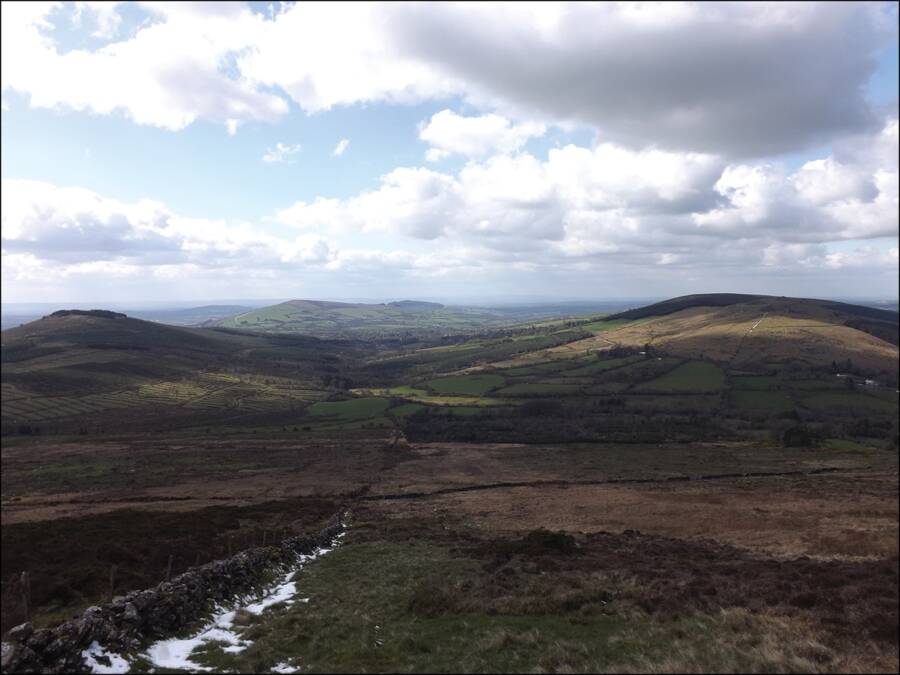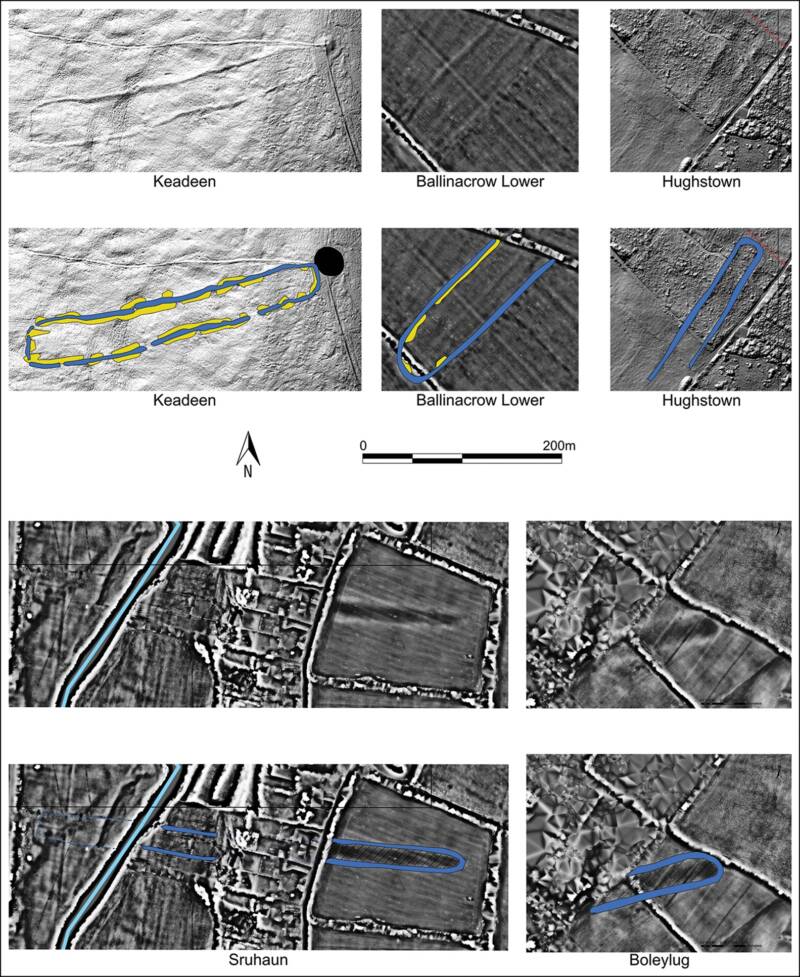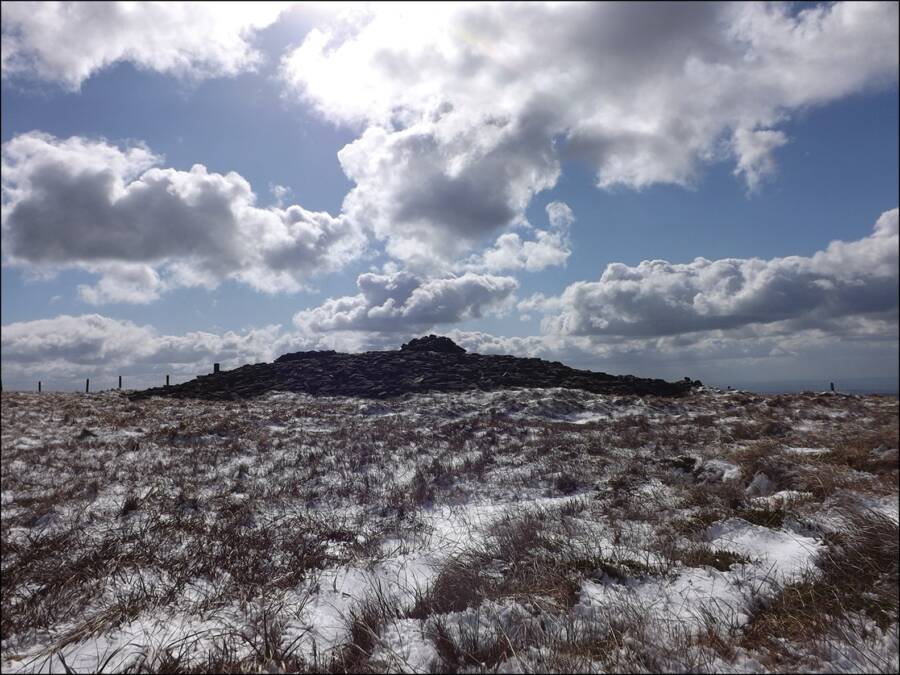Using LiDAR technology, archaeologists found that prehistoric monuments across County Wicklow may have served as routes to guide spirits to the afterlife.
James O’DriscollBaltinglass , Ireland , where the cursus monuments were discovered .
In a late archaeological study , researcher revealed the presence of hundreds of previously unknown historic monument scattered across the Irish countryside , including a “ monolithic ” Bronze Age hillfort and former gothic fortifications .
However , the most significant of these finds were five particularly uncommon structure from prehistorical times . Now , archeologist think these “ cursus ” monument may have been constructed as “ route for the dead ” to guide spirits to the afterlife .

James O’DriscollBaltinglass, Ireland, where the cursus monuments were discovered.
The study , which was publish in the journalAntiquityon April 25 , was led by the University of Aberdeen ’s Dr. James O’Driscoll with support by the Community Monuments Fund and Wicklow County Council .
Using LiDAR engineering , O’Driscoll and his squad analyze the freshly discovered repository in Baltinglass , in eastern Ireland ’s County Wicklow . The part was known to have been occupied during the Early Neolithic ( around 3700 B.C.E. ) and the Middle to Late Bronze Age ( 1400 to 800 B.C.E. ) , but detail about the 2,000 - class gap in between , the Middle Neolithic , remained knotty until now .
What Cursus Monuments Reveal About Middle Neolithic Life In Ireland
For a farsighted while , researchers trust that Baltinglass had simply been abandon during the Middle Neolithic period , found on a want of grounds that the area was occupied . But the breakthrough of these prehistoric monuments , which likely escort to the Middle Neolithic era , challenges that impression .
The five trench - like structures , known as cursus monuments , had been conceal for millennia . However , the LiDAR scans unveil the abundance of these structures , as well as how they were array , hint at a great ritual significance .
James O’DriscollLiDAR scans of the cursus monuments across Baltinglass .

James O’DriscollLiDAR scans of the cursus monuments across Baltinglass.
They also give away a complex understanding of the human relationship between nature , life , destruction , and renascence in ancient Ireland .
Cursus monument were probably used for a assortment of purposes , including mark important solar events . Their positioning along the landscape concur with the Dominicus ’s cyclic movements , as well as a numeral of roll in the hay burial sites . O’Driscoll suggests these alignments hint at a apparitional purpose — to draw the dead from the deathly planing machine to the afterlife .
How Cursus Monuments Served As A ‘Route For The Dead’
“ The function of cursus memorial is uncertain , ” O’Driscoll write in the field , “ though most academics fit that they play some ceremonial or ritualistic role … It may be meaning that at least three of the Baltinglass cursus monuments are aline with significant inhumation coordination compound . Notably , at all three sites , the burying complexes are aligned immediately between the various cursus and the rising Dominicus during the summer solstice or autumn equinoctial point . ”
However , he notes , it ’s probable that the cursus monuments were significant in several ways , and that carefulness should be use when trying to read them .
Still , O’Driscoll suggests the cursus monuments ’ purpose may be link up to the dead .

James O’DriscollThe robbed-out cairn atop Keadeen Mountain, which coincides with the route of the cursus monuments.
James O’DriscollThe plume - out cairn atop Keadeen Mountain , which concur with the road of the cursus monuments .
“ We might also deal these repository as road for the dead , where the living process with the deceased in a gear up itinerary which may , in places , have involved a consecrated river , ” O’Driscoll writes . “ The cursus may have mastermind the traveler towards their final resting place in a burial monument , which , at Baltinglass , place deliberately just out of sight of the living processing within or alongside the cursus . ”
The Baltinglass cluster of cursus monument is the large group identified in Ireland so far . antecedently , cursus memorial were only known to subsist in pairs at Newgrange , Knockainey , and Brewel Hill — though there are similar clusters found in portion of Britain .
Unlike the British bunch , though , those receive in Ireland — particularly at Baltinglass — were more often construct on steep ramp and mountains . The direction they are put to ordinate with solar events suggest ancient hoi polloi could have see the sun develop above inhumation structure as being symbolical of “ the ascending of the dead into the celestial sphere . ”
“ Further depth psychology of the Baltinglass cursus repository , as well as Irish case more broadly speaking , holds groovy potential for understanding Middle Neolithic ritual and ceremonial practices , ” O’Driscoll conclude . “ The lack of elaborate analysis , survey and excavation of the extensive principal sum of Irish cursus monuments obstruct further procession , however , and a necessary next dance step is a comprehensive catalog of site .
“ Until then , the Baltinglass cursus coordination compound remain a alone exercise of the complex ritual and ceremonial practices of the Irish Middle Neolithic . ”
After reading about the meaning of cursus monuments in ancient Ireland , learn all about Ireland ’s famousBlarney Stone . Then , translate aboutNewgrange , the Irish grave that ’s older than the pyramids .